Hydrostatic pressure sensing devices for measuring liquid level and converting it to an electrical signal to send to other instrumentation.
Hydrostatic level sensors for measuring the pressure generated by a static head of liquid. Use hydrostatic level sensors to measure fluid level in storage tanks, processing vessels, header tanks, pump inlet head and other applications where hydrostatic pressure is used to determine liquid height.
Products
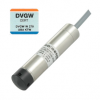 LMP307 Submersible Level Transmitter - Submersible level transmitter for measuring liquid level with a 4-20mA current loop or a 0-10V voltage output plus optional ATEX approval for intrinsically safe use in hazardous areas in ranges from 1mH2O up to 250mH2O. The LMP307 is suitable for use on potable water with no leaching, and can be supplied with a drinking water certificate according to DVGW and KTW.
LMP307 Submersible Level Transmitter - Submersible level transmitter for measuring liquid level with a 4-20mA current loop or a 0-10V voltage output plus optional ATEX approval for intrinsically safe use in hazardous areas in ranges from 1mH2O up to 250mH2O. The LMP307 is suitable for use on potable water with no leaching, and can be supplied with a drinking water certificate according to DVGW and KTW.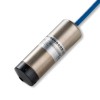 LMK458 Marine Approved Hydrostatic Level Transmitter - Marine approved level transmitter with 4-20mA output for measuring level of contents inside ship ballast, fuel, liquid cargo or wastewater tanks
LMK458 Marine Approved Hydrostatic Level Transmitter - Marine approved level transmitter with 4-20mA output for measuring level of contents inside ship ballast, fuel, liquid cargo or wastewater tanks
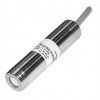 LMK307 Submersible Waste Water Level Sensor
LMK307 Submersible Waste Water Level Sensor DPT200 Pressurised Tank Level Differential Pressure Transmitter
DPT200 Pressurised Tank Level Differential Pressure Transmitter 18.605 G Low Cost Submersible Diesel Fuel and Water Tank Level Sensor
18.605 G Low Cost Submersible Diesel Fuel and Water Tank Level Sensor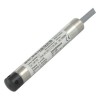 LMP305 Borehole Level Transmitter
LMP305 Borehole Level Transmitter
Applications
 Borewell water level sensor for 100m water height - Low cost solution to measuring the water level in a borewell with a water height of as much as 100 metres above the submerged sensor
Borewell water level sensor for 100m water height - Low cost solution to measuring the water level in a borewell with a water height of as much as 100 metres above the submerged sensor 200m deep well pump water level sensor, switch & display - We need to measure the water level in a well down to 200 meters to protect a well pump by ensuring that it always stays under water
200m deep well pump water level sensor, switch & display - We need to measure the water level in a well down to 200 meters to protect a well pump by ensuring that it always stays under water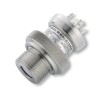 Dirty water, sludge & sewerage tank level 400 mbar pressure sensor - Flush ceramic diaphragm pressure sensor for measuring level of a dirty water, sludge & sewerage tank.
Dirty water, sludge & sewerage tank level 400 mbar pressure sensor - Flush ceramic diaphragm pressure sensor for measuring level of a dirty water, sludge & sewerage tank. Contaminated groundwater submersible plastic body 5 psi pressure transducer & display - This submersible pressure transducer and display can be used by landfill site pump techs to read leachate water level above the transducer at the well head.
Contaminated groundwater submersible plastic body 5 psi pressure transducer & display - This submersible pressure transducer and display can be used by landfill site pump techs to read leachate water level above the transducer at the well head.
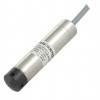 -5…+50degC temperature and 10m range level dual 4-20mA submersible borehole transmitter
-5…+50degC temperature and 10m range level dual 4-20mA submersible borehole transmitter Potable water underground 10ft dia storage tank temperature and level sensor
Potable water underground 10ft dia storage tank temperature and level sensor Lightning protected submersible level sensor for hydroelectric intakes and rivers
Lightning protected submersible level sensor for hydroelectric intakes and rivers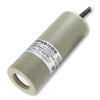 2m range 0.6% conc. chlorine liquid level sensor
2m range 0.6% conc. chlorine liquid level sensor Hot leachate level transmitter for 20m deep well monitoring on landfill sites
Hot leachate level transmitter for 20m deep well monitoring on landfill sites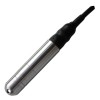 50m seawater depth and temperature sensor with SDI-12
50m seawater depth and temperature sensor with SDI-12 2 metre deep diesel tank level sensor for submersion
2 metre deep diesel tank level sensor for submersion Submersible oil pressure sensor alternative to Ashdown CNS
Submersible oil pressure sensor alternative to Ashdown CNS
- Low cost 2 metre high diesel tank level sensor with 0-10 volt output
- 2 meters of freshwater depth, submersible pressure transmitter
- Diesel exhaust fluid tank level sensor for fleet storage
- Cement plant process water basin level sensor
- Stilling well 3ft range SDI-12 interface lake water level sensor
- 12ft high ink tank screw-in 4-20mA output level sensor
- Remote water tank level monitoring via GSM mobile network
- Fleet management system submersible 3000mm height petrol tank level ATEX rated pressure sensor
- Industrial dishwasher 0-1m 0-10Vdc water level sensor
- Floating dry dock ballast tank 14ft range 4-20mA output submersible seawater level sensor
- Automatic fire pump engine 48 inch range 0-10Vdc output diesel tank level sensor
- Dairy farm 6m high milk storage vat 4-20mA level transmitter
Product Types
 Chemical Resistant Hydrostatic Liquid Level & Pressure Sensors - Pressure transmitters & transducers that are resistant to chemical corrosion for measuring the hydrostatic level of storage tanks or process pressures.
Chemical Resistant Hydrostatic Liquid Level & Pressure Sensors - Pressure transmitters & transducers that are resistant to chemical corrosion for measuring the hydrostatic level of storage tanks or process pressures.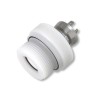 4-20mA Output Hydrostatic Level Transmitters & Sensors - Liquid level transmitters with a 4 to 20 milliamp current loop output signal for determining liquid depth or the fluid level by measuring the hydrostatic pressure.
4-20mA Output Hydrostatic Level Transmitters & Sensors - Liquid level transmitters with a 4 to 20 milliamp current loop output signal for determining liquid depth or the fluid level by measuring the hydrostatic pressure. 0-10 Volts Output Hydrostatic Sensors, Probes & Transducers - Analog output hydrostatic sensors with a 0 to 10 volt amplified output signal for measuring liquid head pressure or fluid level.
0-10 Volts Output Hydrostatic Sensors, Probes & Transducers - Analog output hydrostatic sensors with a 0 to 10 volt amplified output signal for measuring liquid head pressure or fluid level.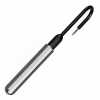 SDI-12 Hydrostatic Liquid Level Sensors - SDI-12 interface hydrostatic level sensors with a serial digital interface for measuring liquid depth and returning the reading to low powered telemetry instrumentation in remote locations.
SDI-12 Hydrostatic Liquid Level Sensors - SDI-12 interface hydrostatic level sensors with a serial digital interface for measuring liquid depth and returning the reading to low powered telemetry instrumentation in remote locations.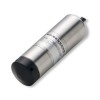 Submersible Hydrostatic Level Sensors & Probes - Level sensors for submerging permanently in liquid to determine the level or depth of fluid by measuring the hydrostatic pressure.
Submersible Hydrostatic Level Sensors & Probes - Level sensors for submerging permanently in liquid to determine the level or depth of fluid by measuring the hydrostatic pressure.
Description
Hydrostatic level sensors are pressure sensing devices specifically designed for use on liquid level measurement applications.
All liquids which are under the influence of gravity generate a hydrostatic pressure. This pressure is similar to the weight of a solid object, but because of the fluid state it is possible to measure how the weight of the liquid varies with height.
The resulting pressure at different heights is directly proportional to the weight of a liquid between the surface and a specific height point. The weight of the liquid can be derived from the mass and force (gravity). The mass can be derived from the density and volume of the liquid. The volume of a liquid can be derived from the dimensions of the vessel containing the liquid. If the vessel has a fixed length and width, then the height is directly proportional to the volume, mass, weight and therefore the pressure.
A hydrostatic level sensor is an instrument for measuring the height of a liquid and converting it to an electrical signal. The hydrostatic level signal output can then be utilised by other instrumentation to display, monitor, log or control the liquid level.
There are many different types of technology used to measure liquid level, there are sensors that can be mounted above the liquid such as ultrasonic or radar which bounce a sound or electromagnetic wave off the surface of the liquid and use the travel time to determine the distance from the liquid surface.
For liquid filled tanks a pressure sensor can be installed in a hole at the bottom of the tank which measures the hydrostatic pressure generated by gravity acting on the liquid.
Another method is to lower a hydrostatic level sensing probe into the tank and immerse it in the liquid to measure the pressure generated by gravity acting on the surrounding liquid.
Advantages
- Easily fitted at ground level to any port or take off, which is also convenient for maintenance
- No protrusion inside vessel
- Not affected by any surface disturbances such as turbulence, foaming, vibration
- Small compact size possible
- Compatible for conductive or non-conductive fluids
- Flush diaphragm types prevent clogging and works with thick liquids and slurries containing solids
Disadvantages
- Pressurised or vacuum sealed vessels require a more complex installation
- SG or density change affects calibration
- Flush diaphragm types vulnerable to mechanical damage from debris, cleaning processes
- Requires regular calibration due to gradual error shifts
- Installed in a position below the lowest required liquid level
- Fittings must be leak tight
- Diaphragm movement vulnerable to clogging, wear and tear
- High cost
